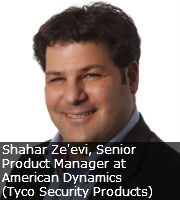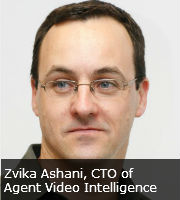Despite the lack of major breakthroughs seen in video content analysis, future developments are aimed at reducing the rates of false alarms to further enhance usability.
False alarms are inevitable with current VCA technologies, and will probably continue to remain an issue for some years to come. What's important is minimizing the rates of false alarm in the VCA system for smoother operations and prevent wasting resources to address false alarms. False alarms can be set off by falling leaves, weather conditions, lighting reflections, and other common factors, especially in crowded settings where there are constant movements of people and objects. The more complicated a setting is, the more likely there will be false alarms. Multiple approaches – rule-based and/or artificial intelligence-based – can be taken to provide a solution. Different demographics will require different calibrations and sensitivity settings. Technologies such as continuous image learning to tackle light and background changes, object classification, or defining shape and size of zones, minimum and maximum of object size, time intervals, and time schedule to apply analytics can all help to reduce false alarms. “Self-learning algorithms are important and are the major tools to reduce false alarms. Most false alarms are created by non-alarm movements, such as waiving trees or rippling water,” said.png) Achim Hauschke, CEO of Riva.
Achim Hauschke, CEO of Riva.
VCA can be trained to disregard non-essential scene activities and learn the difference between human, vehicles, and animals based on the database the companies have in possession. “The more information the system is armed with, the better it can be at producing positive results. Our technology uses forensic searches of recorded videos to improve active analytics rules, so the operator is able to learn from his or her own testing. The system can help determine the proper configuration for each camera's field of view and specific rules can be created by simply pressing a button,” said Shahar Ze'evi, Senior Product Manager at American Dynamics (Tyco Security Products).
Sensitivity settings also vary in different applications, depending on the flow and threat level. “In an airport, it is better to have more false positives, whereas in a retail environment, where staffing is low, perhaps missing a positive is acceptable,” said John Sepassi, Account Executive at IntelliVision. Using technologies such as camera shake cancelation and 3D calibration help to lower the rates of false alarm. The former “stabilizes the image before video analytic analysis and provides a steady picture in an unstable environment,” said Vito Kuo, Integration Product Manager at Nuuo. The latter defines the size of a person, vehicle, or other objects. Many times, VCA companies only go as far as testing their products in labs, but providing different scenarios and applications will help to improve and increase the accuracy of the algorithms. “We provide different modes for different scenarios to reduce false alarms, such as shadow mode and crowd mode for people counting. We have accumulated lots of sample data from different scenarios, thus we can tune our algorithms continuously. The 3D vision technology is another new technology we adapt to reduce false alarms because more information is available, such as the depth and height information,” said Jamie Wu, Marketing Manager at Huper Laboratories.
 Current Technology Barriers and Future Trends
Current Technology Barriers and Future Trends
Though VCA technologies and algorithms continue to mature, they are still faced with several impedances. Users still hold high expectations for VCA, especially its use in crowded areas. The limited processing power, once surpassed, will create opportunities for advancements as higher computing power equates to higher accuracy. This can include being able to detect and track specific targets across multiple cameras and correlating them into a single investigative picture. “There will always be a tradeoff between the quality of detection and the available computer resources required,” said Ze'evi.
computer resources required,” said Ze'evi.
Though some requests can be carried out in the future, certain problems can only be addressed by human logic and analysis. While this feature is still unable to be carried out by current updates of VCA, some users hope to have color or pattern recognition as a feature, where they are able to use it to search and pull up all relevant information that concerns it. “For instance, if a person dressed in a striped blue shirt, with black pants were to appear on the screen. If the security guard touches this subject with the mouse, then the system will automatically search for any time it has seen this pattern on any live view stream and create an alert,” said Kuo.
“VCA in its current maturity could not automatically for example identify a person carrying a rucksack in a crowded scene. However, this and many other capabilities will appear with time as processing ability improves,” said Andrew Eggington, Director of Ipsotek. The “abandoned object” feature continues to pose as a problem. Customers want to accurately identify a backpack or bag left behind in a crowded area. This can be easily detected in a controlled or deserted area, but in an environment with constant flocks and movement of people, it can be difficult for VCA to make accurate decisions with no false alarms. Between the thousands of people, their baggage, children, trolleys, and trash they leave behind, the analytics must decide for everyone whether it is an abandoned object or something innocent.
The image quality and the positioning of the cameras also play a huge role in the accuracy of such analytics. “The problem will only be solved when analytics can identify every object from its shape and movement like a human being does,” said Geoff Thiel, CEO of VCA Technology. Some cameras still have difficulty with addressing issues such as insufficient lighting, direct sunlight, reflections off water, weather, fog, etc. this can probably be addressed in the future with low light imagers with wide dynamic range. “Facial recognition is highly required in many verticals, but this technology hasn't yet reached full maturity in crowded environments where it is most requested. It can provide great value if correlated with additional sensors, or deployed in more sterile environments,” said Illy Gruber, Product Marketing Manager at Nice Systems. Soft biometrics through VCA such as gender, age, and race  classification are increasingly being seen in VCA, however it will most likely remain an unreliable feature for VCA. “Some customers expect VCA to accurately detect scenarios and situations where a person cannot even detect the abnormalities or exceptions,” stated Zvika Ashani, CTO of Agent Video Intelligence.
classification are increasingly being seen in VCA, however it will most likely remain an unreliable feature for VCA. “Some customers expect VCA to accurately detect scenarios and situations where a person cannot even detect the abnormalities or exceptions,” stated Zvika Ashani, CTO of Agent Video Intelligence.
The current way of using VCA, where analytics filters and reduces the amount of information for human assessment, will most likely continue into the foreseeable future. “I don't see us handing the decision making over to computers anytime soon,” concluded Thiel.